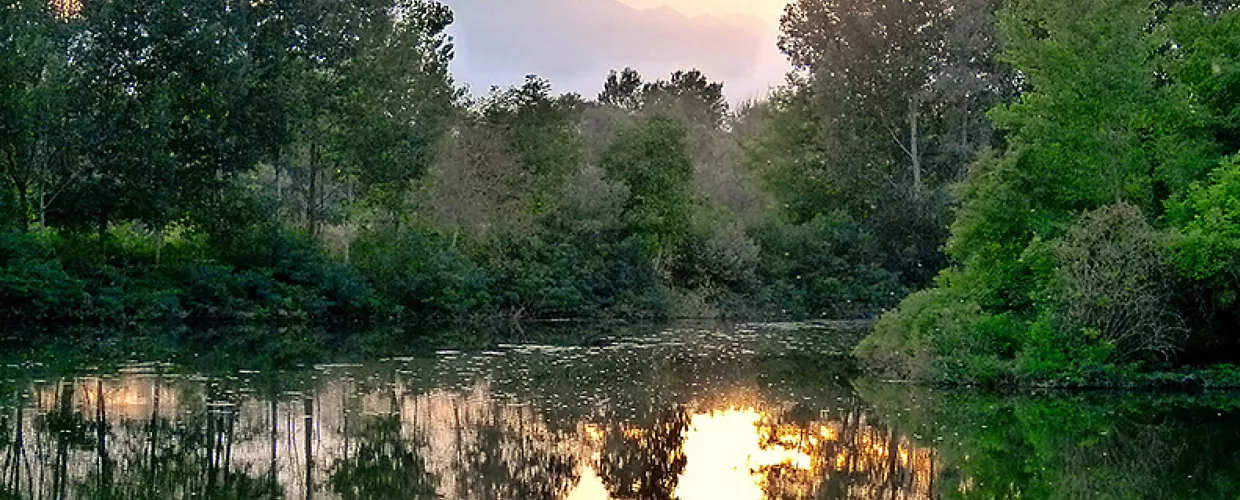This content was automatically translated. View the original text.

Overview
The "dead Po"
A name hardly appropriate to the wonder and vitality of this natural protected area
Outside the walls of Carmagnola lies an ecosystem composed of wetlands and marshes that extend along the banks of the Po River and include the territories of Carignano and Villastellone. It is an oxbow lake (“lanca” in Italian), a river bed where water has stopped flowing, creating a completely new environment. The contrast between the flowing of the river and the absolute calm of the stagnant waters, explains why many people call this area “Po Morto”, the dead Po. The area is also known as St Michael's oxbow (Lanca di San Michele).
Why it is special
The name “dead Po” testifies to a natural behaviour of rivers to which we are not so accustomed. Sometimes rivers change their course and leave behind an empty abandoned riverbed. However, the Lanca is far from dead. Lots of amphibians, insects, marsh birds, both migratory and sedentary, live here. It is an environment teeming with life, a true paradise for those who want to get close to these species and get to know them a little better. Just walk silently along the paths that cross the area to stumble upon exciting encounters!
Not to be missed
The Civic Museum of Natural History is located not far from here, in Carmagnola. Its exhibition halls tell of the unbreakable bond of this territory with the Great River of Italy. As well as acting as a study centre on river habitats, the museum is also home to the first Visitor Centre of the Po River Park.
A bit of history
The history of the “dead Po” was written by the great river itself: due to entirely natural causes, probably a strong flood, this stretch of riverbed was abandoned by the Po, which turned into a new flowing bed. The "dead Po” is now considered one of Italy's best-preserved wetlands: a small and precious ecosystem, protected and recognised as a Special Nature Reserve.
Good to know
There is a loop trail linking the Natural History Museum in Cascina Vigna and the Lanca of San Michele. The same trail also crosses the Bosco del Gerbasso, a natural area entrusted to the museum itself, which has tended it, creating an example of a typical lowland forest.
Credit to: Borghy52
10022 Carmagnola TO, Italia